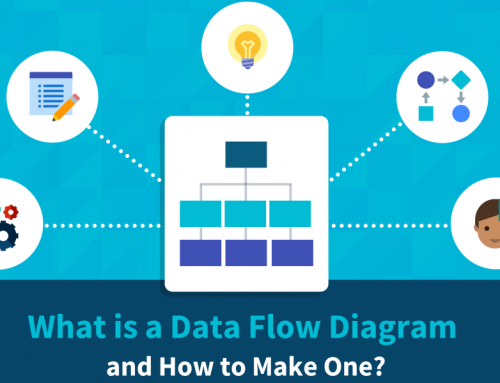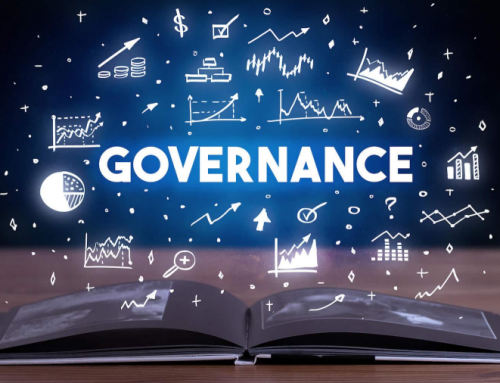What’s Data Lineage? | Why Data Lineage Is So Important?
Nowadays, with the rapid development of economy and technology, we are surrounded by all kinds of data, and almost every part of our business depends on it in some way. When we’re busy deciding how best to manage our data, we may feel we don’t have time to delve into its real benefits for our company. Consider this. Data should be available to our company 24/7. To that end, understanding the details of where it originated, how it got there, and how it circulated in the business is critical to its value.

Data Lineage
Input data lineage, an exquisite tool for unearthing the origin of the gold mine, understanding it, and ensuring that it ends up in the hands of those who need it most. So what’s data lineage? Why data lineage is so important? In this post, let’s take a closer look at the data lineage.
What’s Data Lineage?
It is the pedigree of the data. In short, it refers to a record of how the data arrived at a particular location, as well as the intermediate steps and transformations which happen as the data moves through the business system. In essence, the data lineage gives us a detailed map of the data journey, including all the steps along the way, as shown above.
Data Lineage vs. Data Provenance
The concept of data provenance is related to data lineage. It refers to the source of the data. Based on the provenance, we can make assumptions about the reliability and quality of the data. Both data warehouse and data lake administrators should focus on tracking data provenance and data lineage. Key aspects of metadata management include knowing where and when the data originated, who had touched it, and how to modify it.
Why Data Lineage Is So Important?
Knowing the provenance and lineage of data is highly important for the following reasons:
First, we can assess the credibility of data based on its provenance. In addition, it can help us understand and correct the sources of mistakes. Besides, it allows us to identify false assumptions about the data that might distort the analysis. Furthermore, it provides audit trails for data governance and regulatory purposes. Moreover, with its help, we can ensure that data flows are protected from tampering. Finally, it enables us to identify and avoid data duplication, simplifying operations and reducing costs.
What Business Value Can Data Lineage Provide Us?
Although data lineage may seem like an abstract concept, a comprehensive understanding of the entire life-cycle of data can add value to the business in several areas:
1. Improve business performance
Almost every decision in the modern enterprise relies on BI and decision support systems (DSS). For example, which features should be prioritized in new product design, where to advertise, and which sales and marketing strategies should be used to maximize revenue, profitability, and customer loyalty. The phrase “garbage in, garbage out” can be used to all aspects of analysis. Wrong data can seriously distort results and influence business performance.
2. Manage regulatory compliance and risk
Organizations from all industries must handle various regulatory requirements and some regulatory requirements influence only certain industries. Examples include HIPAA, which aims to protect patient information in healthcare, and Basel, which aims to mitigate risk in international banking. Others, like the EU’s General Data Protection Regulation (GDPR), influence all industries. Owning metadata which tracks data lineage for data governance purposes reduces business risk and costs associated with compliance and it also makes it easier and more cost-effective to comply with potential new regulations in the future.
3. Handle evolving data sources
Systems and data sources change with the evolution of business conditions. For instance, an analytics application which estimates customer behavior just by looking at traditional point-of-sale data is almost certainly wrong. This analytics approach will miss customers for e-commerce orders, in-app purchases, and a variety of other sales channels and demographics. Though this may seem obvious, the problem of data bias and undetected data sources is a problem that even the most complex organization can easily fall into.
4. Reduce IT cost and risk
What all of the above examples have in common is that they all rely on information technology (IT). Organizations that understand data sets and how they are used can build new applications more easily and solve problems with existing applications more quickly and economically. If the metadata source of the data is clear, it is much easier and cost-effective to modify or add an analysis application.
How to manage data lineage?
Data lineage management is particularly important in a data lake environment.The data lake contains different data sets in different formats from different sources such as images, video files, log files, documents, raw text, or files in JSON, CSV, Apache Parquet, or optimized row column (ORC) format. In addition, datasets in the data lake are constantly being added, often quickly, and various tools can access and process the raw data to produce additional derived datasets.
When these issues of diversity and speed are combined with large volumes of data, manually tracking the origins and details of every data item is impossible. Metadata management must be automated in a data lake environment and it is a particular concern when managing data lakes. Unlike the data itself, which is stored in the data lake, metadata is “data about data” and can take many forms.
Conclusion
Thank you for reading our article and we hope it can help you to have a better understanding of what’s data lineage and why data lineage is so important. If you want to know more about data lineage, we advise you to visit Gudu SQLFlow for more information. Thanks again! (Published by Ryan on Apr 18, 2022)
4 Comments
Leave A Comment
If you enjoy reading this, then, please explore our other articles below:




[…] create a bridge between business and IT. By understanding the underlying metadata and associated data lineages associated with business terms, business glossaries help bridge this gap and provide greater value […]
[…] have data privacy and security requirements, so there is a need to tag sensitive data, document its data lineage, and describe its flow for […]
[…] SQL script files, obtain data lineage, and perform visual display, but also allow users to provide data lineage in CSV format and perform visual display. (Published by Ryan on May 26, […]
[…] tools available on the market today, Gudu SQLFlow can not only analyze SQL script files, obtain data lineage, and perform visual display, but also allow users to provide data lineage in CSV format and perform […]